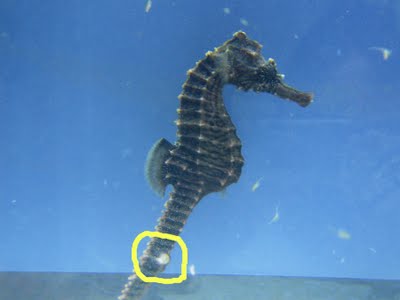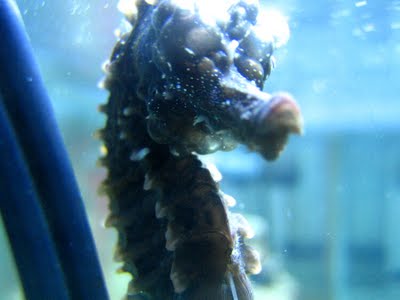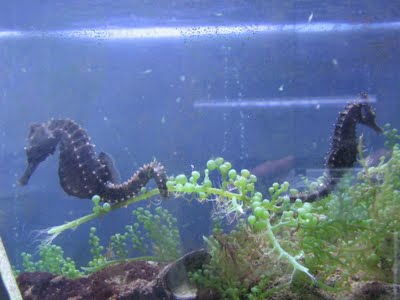This is the second time Clyde our male seahorse has developed pop-eye or gas bubble disease.
 It started on his tail then moved to his head
It started on his tail then moved to his head
There are two type of gas bubble disease, external ( EGBD ) and internal gas bubble disease. EGBD is more common in wild caught seahorses than in captive bred seahorses. Bonnie and Clyde are both a wild caught seahorse. Bonnie has never shown any signs of EGBD. Also none of the other seahorse have shown any signs of EGBD only Clyde.
Bonnie and Clyde are both a wild caught seahorse. Bonnie has never shown any signs of EGBD. Also none of the other seahorse have shown any signs of EGBD only Clyde.
During Clyde’s first encounter with EGDB, tried to medicate the tank as well as Clyde. This did not seem to help. After about 2 weeks and several water changes Clyde got better.
With his second case of EGDB we decided to try to find out why he was getting the disease. We researched and find that there are many different suspicions on what causes the disease, but no one really know exactly why. My guess is that he injured himself chasing ghost shrimp in the rock work.
The next potential cause is the protein skimmer. If you tank become supersaturated with bubbles this can cause EGDB. Since we only have hang on tank protein skimmer we had to come up with an idea how to break the bubbles. What we came up with is to run the outflow through a sock similar to the socks for the inflow of a sump. So we tried a brine shrimp net which is very fine mesh. This seem to reduce the number of bubble that entered the tank.
Next was to increase the water flow without blowing the seahorse around. We put a powerhead in the top far side of the tank and pointed it upwards to where most of the force would not pin the seahorse against anything. For the most part the seahorses seemed to like to take a little ride in the flow. This set up created half the tank with low flow and the rock half with medium flow. This to seemed to help.
While we made these change to help Clyde heal himself, he was still in bad shape. During both times Clyde stopped eating, so we started to bottle feed him baby brine with a syringe. At first he was not too warm and fuzzy on the idea, but after a few days he learned to eat from the syringe. And a couple weeks later he was back to normal, snapping up shrimp and dancing around.
By doing several large water changes, reducing the bubbles in the tank, increasing the water flow and hand feeding Clyde, he pulled through.